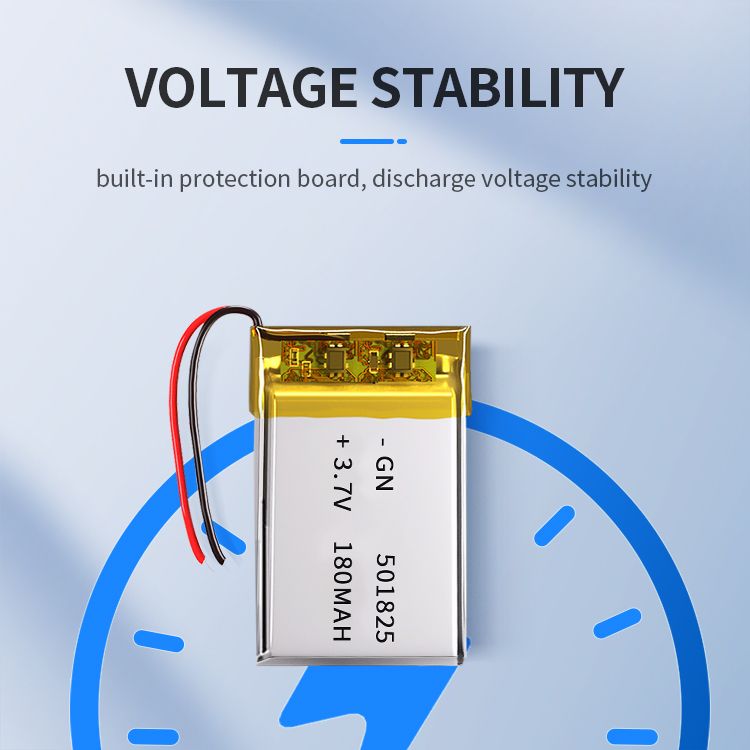

Electronic enthusiasts provide you with the principle technology of nickel-cadmium batteries. The principle technology of nickel-cadmium batteries is that nickel-cadmium batteries can be charged and discharged repeatedly for more than 500 times, and are economical and durable. Its internal resistance is small, its internal resistance is very small, it can charge quickly, and it can provide large current to the load and discharge
Principle and technology of nickel-cadmium battery
Nickel-cadmium batteries can be charged and discharged more than 500 times and are economical and durable. Its internal resistance is small, its internal resistance is very small, it can charge quickly, and it can provide large current to the load, and its voltage changes very little during discharge. It is a very ideal DC power supply battery. Compared with other types of batteries, nickel-cadmium batteries can withstand overcharge or overdischarge. The discharge voltage of nickel-cadmium batteries varies depending on the discharge device. Each unit cell (Cell) is approximately 1.2V. The battery capacity unit is Ah (ampere-hour) and mAh (milliamp-hour). The limit value of the discharge end voltage is called is the "discharge termination voltage". The discharge termination voltage of nickel-cadmium batteries is 1.0/cell (cell is each unit battery). The self-discharge rate is low, and the characteristics of the nickel-cadmium battery will not deteriorate even if it is left for a long time. It can completely restore its original characteristics after being fully charged. It can be used in the temperature range of -20℃+60℃. Because the unit battery uses a metal container, it is strong and durable; it is completely sealed and there is no electrolyte leakage, so there is no need to replenish the electrolyte.
The key to improving battery performance and extending battery life is to avoid memory effects and over-discharge. Nickel-cadmium batteries have a memory effect, that is, after nickel-cadmium batteries are charged and discharged at low capacity several times. If a large-capacity charge and discharge is to be performed, the battery will not work properly. This situation is called the memory effect. The memory effect causes the discharge end voltage to be set higher in video recorders and cameras. As the operating voltage decreases, the battery capacity appears to decrease. However, the decrease in discharge voltage may be temporary caused by one or two complete discharges. Phenomenon. The memory effect prevents the battery's performance from being fully utilized and also brings great inconvenience to shooting. Therefore, when using, you should pay attention to using a charger with charge and discharge performance, such as Sony's BC-1WDCE, to avoid the memory effect. When using general chargers such as BC-1WA and BC-1WB, the battery can be charged about 10 times. Discharging after charging can also prevent the memory effect.
Nickel-cadmium battery (nickel-cadmiumbattery) is an alkaline battery that uses metallic cadmium as the negative active material and nickel hydroxide as the positive active material. The positive and negative electrode materials are filled into perforated nickel-attached steel strips (or nickel strips) respectively, and the plates are made by drawing, rolling, sintering, forming or pasting, drying, and pressing. They are made of polyamide non-woven fabrics. Fabric and other materials are used as the isolation layer; potassium hydroxide aqueous solution is used as the electrolyte solution; the electrodes are wound or stacked and assembled in a plastic or nickel-plated steel shell. The nominal voltage of nickel-cadmium batteries is 1.2V, and there are many types such as cylindrical sealed type (KR), button type (KB), square sealed type (KC), etc. It has the characteristics of wide operating temperature range, long cycle and storage life, and can be discharged at a larger current. However, it has a "memory" effect and often causes a decrease in electrical performance due to regular incorrect use. The battery expression of nickel-cadmium battery is: (-)Cd︱KOH(NaOH)︱NiOOH(+) The battery reaction is: When discharging: Cd+NiOOH+H2O→Ni(OH)2+Cd(OH)2 When charging: Ni(OH)2+Cd(OH)2→Cd+NiOOH+H2O Nickel-cadmium (Ni-Cd) rechargeable batteries are widely used in modern life.
It is known that the electrolyte solution of a certain nickel-cadmium battery is KOH solution, and its charging and discharging are carried out as follows: Cd+2NiOOH+2H2O=Cd(OH)2+2Ni(OH)2 (discharge from left to right, charge from right to left) Charging anode: 2Ni(OH)2-2e—+2OH-==2NiOOH+2H2O Charging cathode: Cd(OH)2+2e-==Cd+2OH-Discharging anode: 2NiOOH+2H2O+2e-==2Ni(OH )2+2OH-discharge cathode: Cd+2OH--2e==Cd(OH)2

Popular recommendation
li ion 18650 battery pack.What is important about the lithium-ion battery production process?
2023-10-081.5v Carbon battery.An alkaline battery charger circuit diagram
2023-10-09Ni-MH battery pack.Introduction to vacuum distillation recovery technology of scrap nickel-cadmium b
2023-10-09AG4 battery!Five innovative battery technologies in the future: lithium batteries have huge room for
2023-10-08CR927 battery.Analyze whether OEMs should enter the lithium-ion battery industry from the four dimen
2023-10-08AG7 battery!What is the principle of high frequency switching power supply circuit?
2023-10-08CR2025 battery.Lithium-ion battery manufacturers briefly discuss the differences between fast chargi
2023-10-08CR1220 battery.Design of battery charging, discharging and detection system based on PWM technology
2023-10-08801752 polymer battery.Chinese enterprises break through the core technology of high-nickel single c
2023-10-08603450 polymer battery.Innovation of power battery drying process under high nickel system
2023-10-08602535 polymer battery.Mater. Yu Jiaguo from Wuhan Institute of Technology. Today: Research progress
2023-10-08AG7 battery.What is the production process of 18650 lithium battery?
2023-10-12